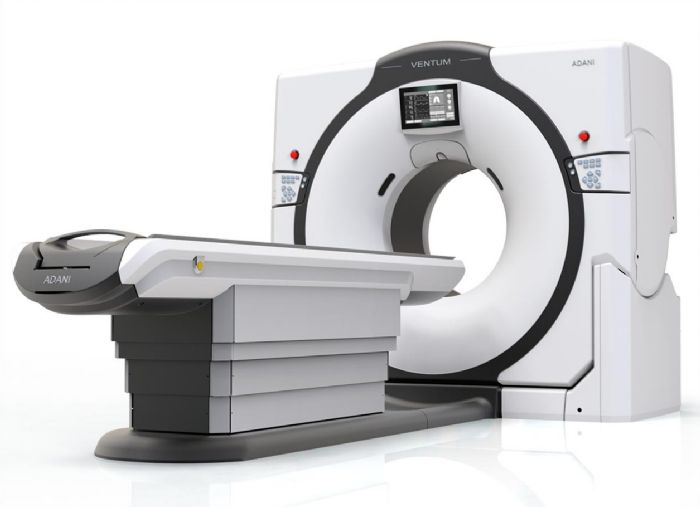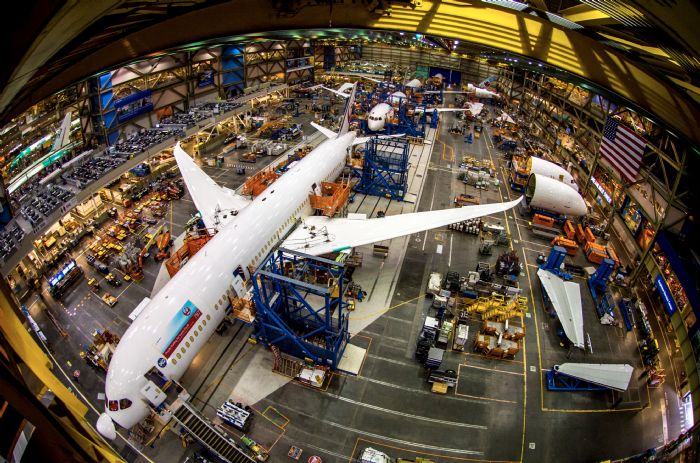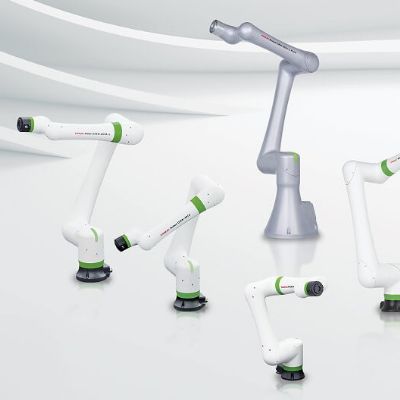“While annual production is expected to decline into early 2021, and then rise through at least year-end 2022, many monthly leading indicators for the U.S. economy are rising, including our own ITR Leading Indicator, the OECD’s U.S. Leading Indicator and the Conference Board’s U.S. Leading Indicator. The more granular daily and weekly datapoints―such as retail spending, prices of many commodities and industrial measures including steel utilization rates―have been showing signs of recovering economic activity.”
Labor Shortage May Dampen a Recovery
One potential threat to a healthy recovery: the looming skill shortage, aggravated by the COVID-19 pandemic. Supply-chain concerns have given rise to increased discussions of reshoring by OEMs, as noted by a recent Thomas survey. It finds that 64 percent of North American manufacturers say that they are likely to reshore production and sourcing in response to COVID-19, a 10-percent increase from its previous survey results issued during Q1 2020.
Also on the rise: investment in manufacturing automation, as manufacturers must find ways to keep turning out product even as the labor market continues to tighten. Notes ITR Economics president Alan Beaulieu:
“Manufacturing automation must be the goal of individual firms if they wish to remain viable and profitable in the coming decade. It is that important and business leaders must be planning, spending and implementing now if they wish to meet the demand and stresses of the coming years.”
A Thomas survey reveals that 25 percent of U.S. manufacturers are considering investments in industrial automation, and another 20 percent already have installed such equipment, helping to meet demand for manufactured goods. New orders for manufactured goods dropped in February, according to the most recent report from the U.S. Census Bureau (issued April 5), following nine consecutive months of increases. Inventories, up six of the last seven months, increased $5.5 billion or 0.8 percent to $702.4 billion. Finally, a whopping 61 percent of U.S. export dollars come from manufacturers.
“In fact,” adds Beaulieu, “the U.S. is the world’s second largest exporter of goods. Most people do not appreciate the power of U.S. manufacturing or the global demand for U.S.-made goods.”
Adversity Leads to Opportunity
Of course, the thousand-pound gorilla in the room remains the pandemic, but here we can see some light at the end of the tunnel. Late in 2020, business-consulting firm KPMG released findings from its survey of manufacturing CEOs. The title of its report speaks volumes of where we’re at: “Adversity Leads to Opportunity.”
“Executives say that the pandemic is proving to be a shot in the arm for the digital transformation of their companies,” notes the survey summary. “Ninety-six percent of manufacturing CEOs say that the progress to digitize their operations has accelerated. 5G is expected to support a wide array of new solutions. Digital capabilities based on Internet of Things, artificial intelligence, autonomous operations, virtual reality and drones are among the solutions that employ 5G networks to deliver big gains in productivity and accelerate innovation.”
The greatest threat to manufacturers' growth over the next three years, apart from the pandemic, is risk to the supply chain, according to chief executives who responded to the survey. This places supply-chain resilience front and center in the minds of CEOs. Risk reduction is top of mind for those surveyed. Technologies such as blockchain and data analytics are being used increasingly to gain visibility and accountability in the supply chain.
“Until recently,” the survey summary reads, “some manufacturers may have known little about the location of their suppliers below Tier One. But after COVID-19 struck and factories abruptly closed and then reopened, many companies began to consider diversifying their supply sources and relying more on suppliers that are close by.”
And, regarding workforce challenges that lie ahead, “companies need to consider how to transform their workforce models, as remote working has widened their potential talent pool with the right combination of physical spaces, technology and a flexible workforce.”
So, while we’re not out of the woods yet, it certainly looks like growth and a return to prosperity looms on the horizon—for those companies equipped to meet increased demand, whether through investments in labor and/or new additive manufacturing (AM) technology, including automation.
With that, here we break down the outlook for a handful of key sectors.
Automotive Recovery Relying on Supply-Chain Flexibility, Resilience
A year better-off forgotten, perhaps, didn’t end on a completely sour note for automotive OEMs and their suppliers. According to Chris Hopson, manager, North American Light Vehicle Sales Forecast, IHS Markit, commenting on April 1, 2021:
“On a SAAR level, March auto sales are shaping up to meet or exceed pre-COVID levels. The big rebound from the prior month was assisted by stimulus and any pent-up demand from weather impacts in February. However, the stronger sales results are bumping against ongoing production issues, creating what could be a volatile demand environment over the next few months.”
Hopson’s coworker, Stephanie Brinley, IHS Market’s principal automotive analyst, adds:
“March and first-quarter 2021 sales reflect that an overall strength in consumer demand for light vehicles is overcoming challenges from the ongoing pandemic and less robust economic conditions. Early data show that brands with new utility vehicles continue to see sales benefits, though several mid-size sedans also improved compared with a year earlier. Consumer appetite for new vehicles in recent months remains a signal of optimism for the rest of the year. As with 2020, for those willing and able to buy a new vehicle, there is a clear desire to do so.”
Concern, however, lies with the supply chain, as noted by industry analyst Laurie Harbour, CEO of Harbour Results Inc. (HRI).
“We are going to lose a lot of our manufacturing base,” she said during a webinar late in 2020. “We could lose 30 percent of the automotive tool-making base.” HRI estimates that while 30 percent of automotive tool makers are doing well, another 30 percent are in trouble and 40 percent are on the bubble.
Part of the challenge facing the industry, Harbour says, owes to the need for OEMs to pare their lineups to concentrate, more than ever before, on profitable cars and trucks. As a result, OEMs will require fewer tools.
Major Household Appliances—Demand Outpacing Supply
 Whereas the COVID-19 pandemic plunged some companies, such as airline and aircraft OEMs and their suppliers, into a brutal slowdown, it did just the opposite for the appliance industry. As consumers were forced to remain homebound, they gained a newfound indignation of their current appliances, wore them out or just realized that they needed more. As a result, the appliance industry quickly depleted inventories and manufacturing shutdowns obliterated the appliance supply chain. With light at the end of the pandemic tunnel, appliance OEMs and their suppliers continue to struggle to meet demand while taking interesting steps to satisfy volume-production needs.
Whereas the COVID-19 pandemic plunged some companies, such as airline and aircraft OEMs and their suppliers, into a brutal slowdown, it did just the opposite for the appliance industry. As consumers were forced to remain homebound, they gained a newfound indignation of their current appliances, wore them out or just realized that they needed more. As a result, the appliance industry quickly depleted inventories and manufacturing shutdowns obliterated the appliance supply chain. With light at the end of the pandemic tunnel, appliance OEMs and their suppliers continue to struggle to meet demand while taking interesting steps to satisfy volume-production needs.
Consider GE Appliances, which, as the pandemic hit, found itself immersed in a digital-supply-chain upgrade. With demand rising as its supply chain was caving due to stay-at-home orders, GE Appliances decided to double down on the upgrade in hopes of rapidly repairing parts supply and the ability to deliver units to consumers.
Prior to the pandemic, reports the Wall Street Journal, the company produced based on demand forecasts, then stocked its distribution centers in anticipation of orders.
“Now there’s no inventory,” Melanie Cook, GE Appliances CEO, told WSJ in December 2020. “Typically, our customers would be used to placing an order—in five to seven days they can get a product. Now we’re still building them.”
With its supply-chain upgrade, GE was seeking real-time visibility in the chain, “which has proved critical to the company’s response to rapid swings in demand as consumers first hunkered down and then sought the equipment for their homes to outlast the lockdowns,” WSJ reports.
At the pandemic’s outset, GE Appliances saw a demand drop, according to Cook, followed by a spike for freezers to record levels. With usage levels way up—refrigerator doors opened 40-percent more than before, and washers and dryers operating 22-percent more often—catching up to replace worn appliances has been tough.
“We literally cannot keep up with the demand,” Cook says. “We’ve invested, added capacity, and we’re still flat out.”
Investment in production expansion at GE Appliances’ U.S. operations, including the software, has been ongoing since 2018—not a moment too soon. During the second half of 2020, the company increased production by 25 percent in response to demand, thanks to that investment as well as to a concerted plant-floor reorganization effort to meet pandemic-related spacing in its plants.
For its part, Whirlpool Corp., based in Benton Harbor, MI, has faced similar supply-chain struggles, leading to a reported 1.6-percent drop in Q3 2020 shipments and a product backlog throughout that timeframe.
Assuming a return to normalcy, the home-appliance market should grow through 2025, buoyed by general U.S. trends of increasing disposable income and population movement toward more urban settings, according to Pricing Excellence, an economic analysis firm. Styling and technological advancements yielding “smart” appliances are other factors that also will fuel growth.
Finally, the most recent Market Insight report on appliances, from Pricing Excellence, projects a U.S. compound annual growth rate of 6.3 percent in appliance sales through 2025, with the refrigerator segment as the biggest contributor among major household appliances.
Steady Growth in Medical, Impacted by New Regulations
 While supplying automotive and aerospace means riding the supply-and-demand rollercoaster, the medical industry chugs along on a more stable trajectory, according to industry data. The globalization of medical-device manufacturers and the increasing complexity of medical devices along with other factors are expected to fuel market growth. And a rising prevalence of chronic diseases is helping to fuel the increased demand for medical devices, with various organizations shifting focus to R&D and then outsourcing manufacturing.
While supplying automotive and aerospace means riding the supply-and-demand rollercoaster, the medical industry chugs along on a more stable trajectory, according to industry data. The globalization of medical-device manufacturers and the increasing complexity of medical devices along with other factors are expected to fuel market growth. And a rising prevalence of chronic diseases is helping to fuel the increased demand for medical devices, with various organizations shifting focus to R&D and then outsourcing manufacturing.
After a 4.4-percent decline in 2020, in step with overall U.S. manufacturing, expect a 6.3-percent increase in the U.S. medical-device manufacturing market in 2021, according to data from IbisWorld.
The COVID-19 pandemic presents all sorts of caveats in projections, however—the length of the pandemic, the needs for specific types of pandemic-related devices and consumables, and a possible drop off in need for other medical equipment due to focus on the pandemic. While data on these ramifications are difficult to come by, this much is known: For medical-device manufacturers connected to the COVID-19 pandemic response, 2020 was a year of growth, again according to IbisWorld as reported by Greg Roughan in his UnleashedSoftware.com blog.
Another fly in the projection ointment: the effect of regulatory changes.
Major regulatory updates have occurred or will take effect soon, Roughan explains. These developments require manufacturers to maintain robust quality systems, with “the ability to identify and track individual products―and sometimes components―through the entire manufacturing processes, and beyond into post-sales and servicing,” he offers. Here, Roughan details the key new and coming standards:
- ISO 13485:2016: requirements for medical-device quality-management systems―reviewed in 2020 and adopted by many countries.
- 21 CFR 820: overseen by the U.S. Food & Drug Administration and detailing quality-system regulations and good manufacturing practices for medical devices made or sold in the United States. “It roughly aligns with ISO 13485 without being equivalent,” Roughan writes.
- Regulation (EU) 2017/745: provides rules for medical devices sold in the European Union. Full compliance was required by May 2020 but is delayed until at least May 2021 to avoid impacting the rollout of a COVID-19 response.
- The Unique Device Identification System (UDI) final rule: U.S. legislation requiring medical devices to be uniquely trackable in line with new UDI rules set out in the EU regulations above. Enforcement is delayed for some classes of medical device until 2022 due to COVID-19 disruptions.
Turbulence Defines the Aerospace Market
 In terms of hard hits due to COVID-19, perhaps no industry has taken a harder, sustained hit than aerospace. When it’s on, aerospace and related defense count more than two million skilled workers who earn 46-percent higher wages and benefits than the national average for all workers, according to 2020 Facts and Figures: U.S. Aerospace & Defense, an analysis developed by the Aerospace Industries Association (AIA) with the support of IHS Markit. Among its findings: “Between February and April of 2020, domestic air travel in the United States slowed to a crawl, with more than a 95-percent year-over-year decrease in revenue passenger miles at its lowest point in mid-April.”
In terms of hard hits due to COVID-19, perhaps no industry has taken a harder, sustained hit than aerospace. When it’s on, aerospace and related defense count more than two million skilled workers who earn 46-percent higher wages and benefits than the national average for all workers, according to 2020 Facts and Figures: U.S. Aerospace & Defense, an analysis developed by the Aerospace Industries Association (AIA) with the support of IHS Markit. Among its findings: “Between February and April of 2020, domestic air travel in the United States slowed to a crawl, with more than a 95-percent year-over-year decrease in revenue passenger miles at its lowest point in mid-April.”
There is, however, light at the end of the proverbial tunnel. This from Boeing:
“As we see it today, the near-term impacts (of the pandemic) have become visible but key long-term growth drivers remain as well… Over the last decade, growth in passenger air travel averaged 6.5 percent per year, well above the long-term average of 5 percent. In this business environment, many of the world’s airlines grew their fleets through deliveries of new airplanes and often delayed airplane retirements to accommodate passenger demand. The current downturn is likely to lead to the replacement of many older passenger airplanes. This accelerated replacement cycle will position airlines for the future by improving the efficiency and sustainability of today’s fleet…We currently believe it will likely take about three years for air travel to return to 2019 levels, and it will be a few years beyond that for the industry to return to long-term growth trends.”
A renewed space program offers encouragement. Space systems experienced a sales surge of nearly 9 percent from 2018 to 2019, reports AIA.
“With the announcement of NASA’s Artemis program and the founding of the U.S. Space Force in 2019,” the AIA analysis reads, “the space subsector appears well-positioned for future growth as our nation embraces its next frontier. Despite difficult circumstances in commercial aviation, commercial aerospace managed to post strong gains, boasting a seven-percent growth in sales and a 6.9-percent growth in its contribution to U.S. GDP.”
Off-Road Market (Construction, Mining, Ag) Trending Higher
Worldwide, the construction-equipment market is projected to reach $205 billion by 2025, at a CAGR of 3.9 percent, according to a recent report from Markets-andMarkets.
Fueling the rise: rapid urbanization necessitating the need for more housing, and the expected need to address infrastructure. On the rise: the need for smaller-engine equipment such as mini-excavators and compact loaders for construction, snow removal, landscaping, etc., as well as heavy-duty machinery such as crawler excavators and wheeled loaders, for infrastructure projects.
Growing at a CAGR of 6.2 percent, the compact-construction-equipment segment should total upward of $9.4 billion worldwide by 2023, offer data from Allied Market Research. The expected uptick in this segment is buoyed not only by general construction, but by applications in mining and agriculture, as well as the introduction of new technologies in this equipment.
In the short term, as with most markets, off-highway segments such as agricultural, construction and industrial are experiencing dramatic production declines, offers Jim Downey, vice president of global data products for Power Systems Research, in a report at oemoffhighway.com. The pandemic, combined with recent setbacks owing to weather, trade disputes and low commodity rates, has presented serious challenges, he reports, and stifled hopes for a rebound in 2020 after a 3.7-percent decline in 2019. A steady recovery beginning in 2021 should bring production levels back to 2016-17 levels, just prior to the challenges listed above. In the United States specifically, Downey reports, federal and state declarations of construction as “essential” counts as positive for the segment.
“Increased investment, along with government support for the digital mine innovation, is expected to trigger the demand for mining equipment,” a Grand View Research report reads. “Improvements and innovations in extraction technologies and equipment have contributed to the betterment of ore grades, thus extending the life of older mines.”
A transition from underground to economical open-pit mining also will propel demand for mining equipment over the next few years, the report also notes.
Back to agricultural equipment, expect growth at a CAGR of six percent through 2027, according to data from Research and Markets. An increase in mechanization of ag activities is expected as a key driver here, along with population-driven needs to improve crop cultivation. Expect robust sales of farm tractors and self-propelled combines in the United States and Canada, according to the publication Farm Equipment, citing data from the Association of Equipment Manufacturers (AEM).
Finally, according to Reuters, industry sales of agricultural equipment in the United States and Canada are forecast to grow by five to 10 percent in 2021, with projected sales increases in Europe and South America as well.
An Amped-Up Electronic Contract-Manufacturing Market
The proliferation of mobile devices such as tablets and smartphones continues to propel the electronic contract-manufacturing market. Same for the medical industry, where outsourcing of component assembly, engineering, design and subassembly manufacturing, including stamped metal frames and fabricated-metal support structures, enables OEMs to accelerate R&D activities and to reduce the cost of devices.
So notes a market report from Grand View Research, which predicts that the global market for electronic contract manufacturing and design services will grow at a CAGR of 8.5 percent through 2027. Among core competencies expected of suppliers: the ability to specialize in economies of scale in services, industrial-design expertise, raw-materials procurement and pooling resources.
OEMs are increasingly considering outsourcing their design and engineering to substantially reduce costs and improve flexibility, concludes the team at Grand View Research. “They are increasingly investing in R&D activities and other strategic initiatives to streamline their production processes in order to sustain in the highly competitive environment,” the report finds, noting a trend toward to the use of AM and artificial-intelligence technology for automation.
Finally, “while the IT and telecom segment emerged as the largest end-use segment,” the Grand View Research report says, “growing outsourcing trends in the healthcare, automotive, defense and other segments are projected to spur their market shares.”
For example, look for the automotive market to continue to be a key driver of the electronics industry, with cars becoming the ultimate mobile devices. Automotive innovations pushing the development and use of electronic technology include advanced driver-assistance systems, head-up displays, and the continued increase in the use of sensors and cameras, inside and outside of vehicles. 3DMP
Technologies:








 Whereas the COVID-19 pandemic plunged some companies, such as airline and aircraft OEMs and their suppliers, into a brutal slowdown, it did just the opposite for the appliance industry. As consumers were forced to remain homebound, they gained a newfound indignation of their current appliances, wore them out or just realized that they needed more. As a result, the appliance industry quickly depleted inventories and manufacturing shutdowns obliterated the appliance supply chain. With light at the end of the pandemic tunnel, appliance OEMs and their suppliers continue to struggle to meet demand while taking interesting steps to satisfy volume-production needs.
Whereas the COVID-19 pandemic plunged some companies, such as airline and aircraft OEMs and their suppliers, into a brutal slowdown, it did just the opposite for the appliance industry. As consumers were forced to remain homebound, they gained a newfound indignation of their current appliances, wore them out or just realized that they needed more. As a result, the appliance industry quickly depleted inventories and manufacturing shutdowns obliterated the appliance supply chain. With light at the end of the pandemic tunnel, appliance OEMs and their suppliers continue to struggle to meet demand while taking interesting steps to satisfy volume-production needs. While supplying automotive and aerospace means riding the supply-and-demand rollercoaster, the medical industry chugs along on a more stable trajectory, according to industry data. The globalization of medical-device manufacturers and the increasing complexity of medical devices along with other factors are expected to fuel market growth. And a rising prevalence of chronic diseases is helping to fuel the increased demand for medical devices, with various organizations shifting focus to R&D and then outsourcing manufacturing.
While supplying automotive and aerospace means riding the supply-and-demand rollercoaster, the medical industry chugs along on a more stable trajectory, according to industry data. The globalization of medical-device manufacturers and the increasing complexity of medical devices along with other factors are expected to fuel market growth. And a rising prevalence of chronic diseases is helping to fuel the increased demand for medical devices, with various organizations shifting focus to R&D and then outsourcing manufacturing. In terms of hard hits due to COVID-19, perhaps no industry has taken a harder, sustained hit than aerospace. When it’s on, aerospace and related defense count more than two million skilled workers who earn 46-percent higher wages and benefits than the national average for all workers, according to 2020 Facts and Figures: U.S. Aerospace & Defense, an analysis developed by the Aerospace Industries Association (AIA) with the support of IHS Markit. Among its findings: “Between February and April of 2020, domestic air travel in the United States slowed to a crawl, with more than a 95-percent year-over-year decrease in revenue passenger miles at its lowest point in mid-April.”
In terms of hard hits due to COVID-19, perhaps no industry has taken a harder, sustained hit than aerospace. When it’s on, aerospace and related defense count more than two million skilled workers who earn 46-percent higher wages and benefits than the national average for all workers, according to 2020 Facts and Figures: U.S. Aerospace & Defense, an analysis developed by the Aerospace Industries Association (AIA) with the support of IHS Markit. Among its findings: “Between February and April of 2020, domestic air travel in the United States slowed to a crawl, with more than a 95-percent year-over-year decrease in revenue passenger miles at its lowest point in mid-April.”
